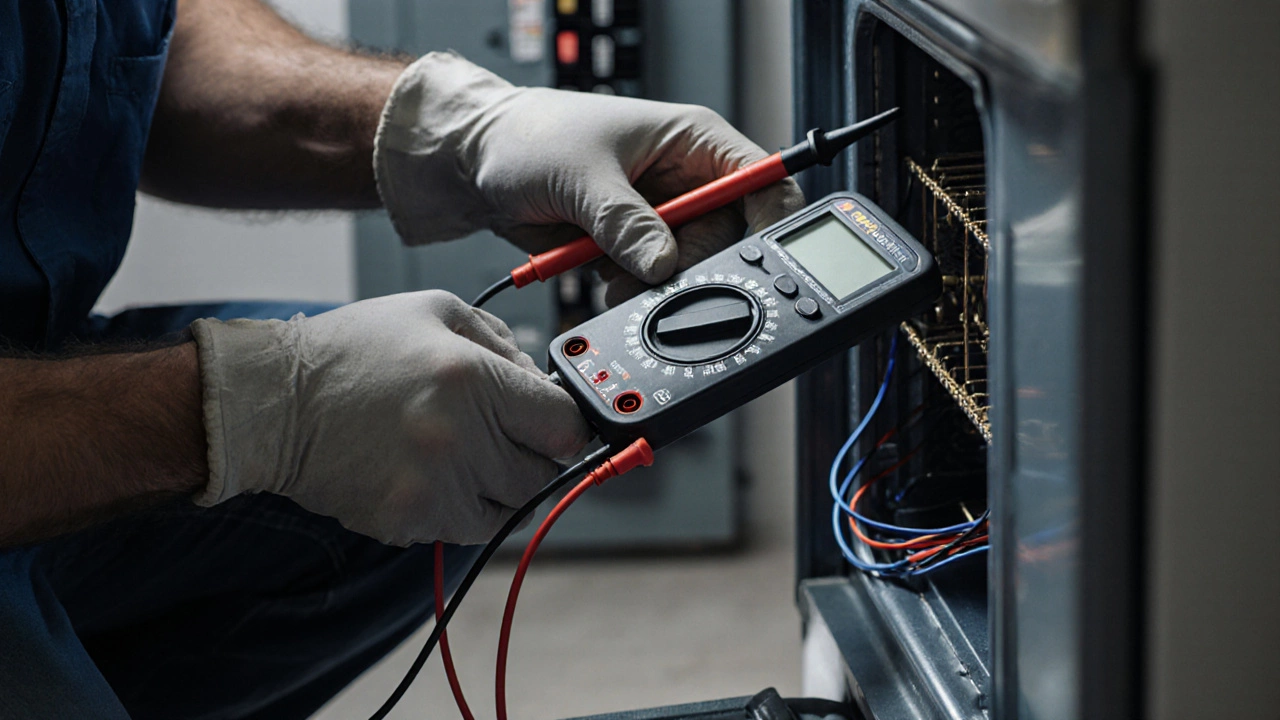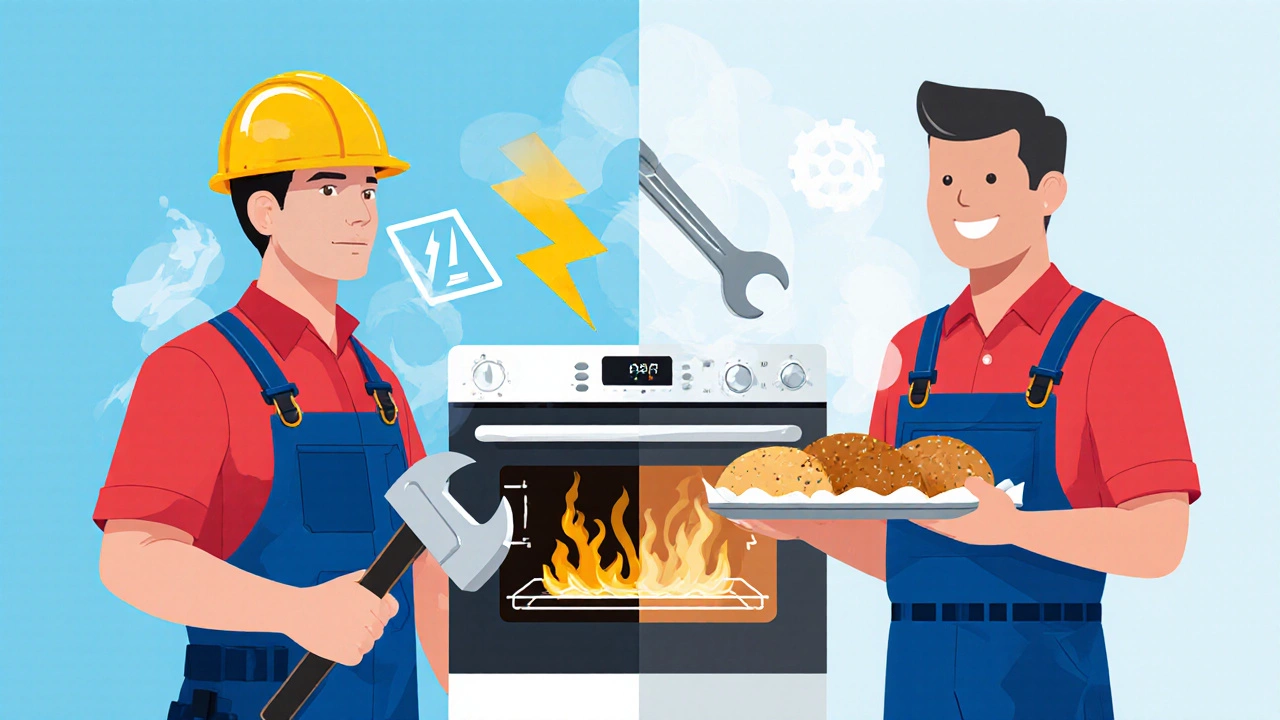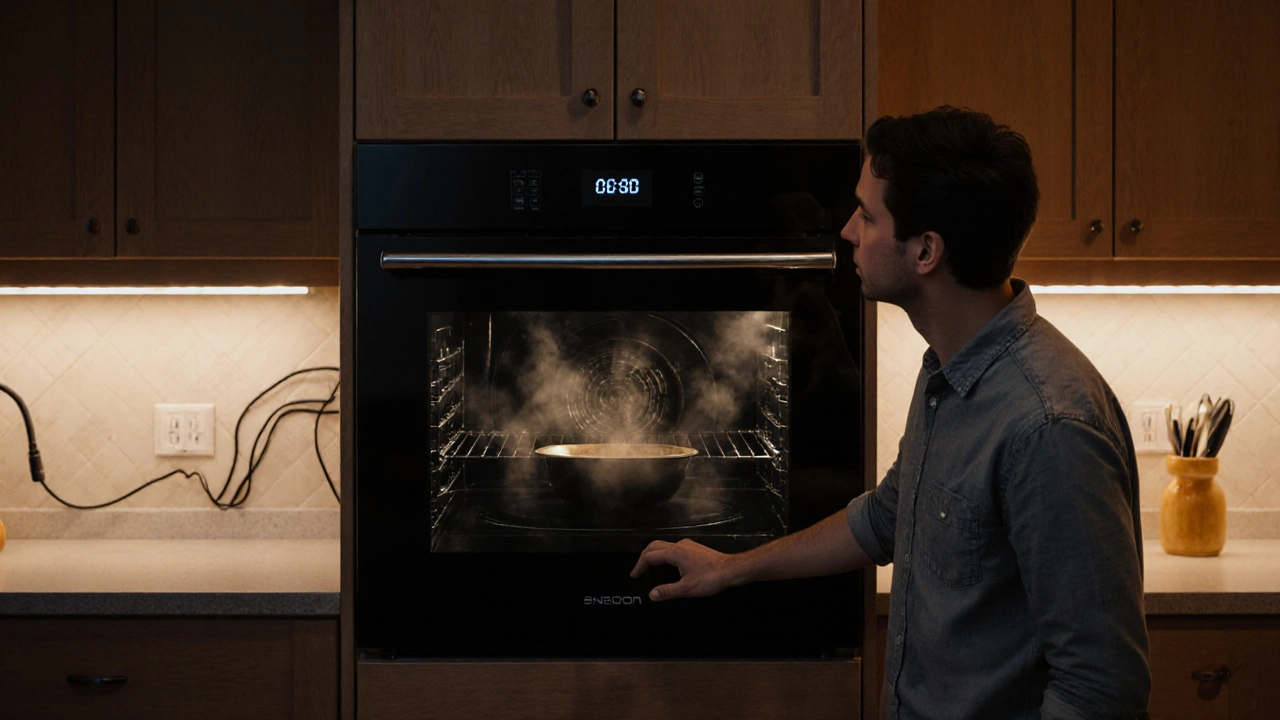Oven Repair Cost Estimator
Estimate Your Oven Repair Costs
Get a realistic cost estimate based on common oven repair scenarios in New Zealand (2025 rates).
Did you know a failed heating element can waste up to 30% of your electricity bill? When your electric oven stops heating, the first question is usually - who should fix it? Electric Oven is a built‑in kitchen appliance that uses electric coils or a radiant element to generate heat for baking, roasting, and broiling. While many homeowners assume a general handyman can handle the job, the truth is a bit more nuanced. Below we break down when an Electrician is the right professional, what parts they’re legally allowed to touch, and how to keep your home safe during the repair.
What an electrician actually does with an electric oven
An electrician’s core skill set revolves around electrical circuits, wiring, and compliance with the New Zealand Electrical Code (AS/NZS 3000). When they step into the kitchen, they typically handle three main tasks:
- Power supply inspection: Checking that the oven’s dedicated circuit is correctly sized (usually 30 A for a 240 V oven) and that the circuit breaker or fused spur is functioning.
- Wiring diagnostics: Tracing any loose, burnt, or corroded connections from the wall outlet to the oven’s internal junction box.
- Component testing for electrically‑driven parts: Using a multimeter to verify voltage at the heating element, thermostat, and control board.
Because these actions involve live mains voltage, they demand a licence and the right protective equipment - something a casual DIY‑er rarely possesses.
Key oven components that need a qualified hand
Not every oven part is off‑limits to a homeowner, but a few are strictly in the electrician’s domain:
- Heating Element: The resistive coil that gets hot when 240 V passes through it. Replacing it often requires disconnecting the appliance from the mains, measuring resistance, and ensuring the new part matches the original wattage.
- Thermostat (or temperature sensor): This low‑voltage device tells the control board when to turn the element on or off. Faulty sensors can cause over‑heating, a safety hazard.
- Control Board: The brain of modern ovens, powered by the same mains supply. Diagnosing a burnt board or fried ICs is a job for a licensed electrician or an authorised service centre.
- Circuit Breaker / Fuse: If the oven trips the breaker repeatedly, an electrician will determine whether the breaker is undersized or if the oven is drawing excessive current due to a short.
- Internal Wiring Harness: Loose or frayed wires inside the oven can cause intermittent power loss. Only a qualified electrician should replace or reseat these connections.
Things you can safely replace yourself include the oven door gasket, crumb tray, and exterior knobs - as long as you keep the appliance unplugged.

When to call an electrician vs. an appliance technician
Both electricians and appliance repair technicians can work on ovens, but their focus differs. Below is a quick side‑by‑side comparison to help you decide who to phone.
| Aspect | Electrician | Appliance Technician |
|---|---|---|
| Primary Training | Electrical licence, knowledge of wiring codes | Appliance service certification, brand‑specific training |
| Typical Tasks on an Oven | Check circuit, test voltage, replace heating element, diagnose wiring faults | Replace door hinges, calibrate temperature sensor, service control board, clean fan |
| Cost (NZ $) | 150‑250 for inspection, plus parts | 80‑150 for diagnostics, plus parts |
| Availability | Often on‑call for emergencies | Typically works within business hours |
| Regulatory Requirement | Must sign off any work that involves mains voltage | Can work on low‑voltage components without a licence |
In practice, many electricians will also handle routine oven repairs if they have experience with kitchen appliances. However, if the issue is purely mechanical - like a broken door latch - a specialist appliance technician is usually cheaper and faster.
Typical costs and how to get a fair quote
Understanding the price structure helps you avoid surprise bills. Here’s a breakdown of common fees in New Zealand as of 2025:
- Call‑out fee: NZ $40-$70 (often waived if the repair proceeds).
- Hourly rate for a licensed electrician: NZ $110-$150.
- Hourly rate for an appliance technician: NZ $80-$120.
- Standard parts pricing (2025 market):
- Heating element: NZ $45-$70.
- Thermostat sensor: NZ $25-$40.
- Control board: NZ $120-$250, depending on brand.
- Travel surcharge for remote areas (e.g., South Island farms): extra NZ $20-$30.
To get a fair quote, ask for a written estimate that separates labour, parts, and any GST. If the electrician recommends a full replacement, request a second opinion - sometimes the issue is a simple loose wire.

DIY safety checklist before the professional arrives
Even though you’ll eventually hand the job to a pro, clearing a few things out can save time and money:
- Turn off the dedicated oven circuit at the breaker panel. Verify the switch is in the OFF position.
- Unplug the oven if it has a separate plug. For built‑in units, leave the breaker off.
- Remove any loose racks, trays, and the interior light bulb. This gives the electrician unobstructed access.
- Note any error codes displayed on the digital panel. Write them down for the technician.
- Check the oven’s user manual for the model number and serial. Having this info ready speeds up parts ordering.
Following these steps shows the electrician that you respect safety and helps them pinpoint the problem faster.
Choosing the right professional in New Zealand
New Zealand has strict licensing rules for anyone working with mains electricity. Here’s how to verify an electrician’s credentials:
- Look for a current Electrical Workers Registration Board (EWRB) licence number.
- Confirm they are covered by a public liability insurance policy - ask for the certificate.
- Check reviews on local platforms like Trade Me Services or the Yellow Pages.
- If your oven is still under warranty, contact the manufacturer first. Some warranties only cover authorised service centres.
For appliance technicians, the same principles apply: ensure they have a valid ACMA certification for appliance servicing and are registered with a recognised trade association.
In short, an electrician can indeed repair an electric oven, especially when the problem involves the heating element, wiring, or any component that draws full mains voltage. For purely mechanical faults, an appliance repair technician may be a more cost‑effective choice. By understanding the roles, safety rules, and typical costs, you’ll know exactly who to call and how to keep the repair process smooth.
Can I replace the heating element myself?
Only if you are a licensed electrician. The element is directly connected to the 240 V supply, and improper handling can cause electric shock or fire. For most homeowners, hiring a qualified electrician is the safest route.
Do electricians need a special licence to work on ovens?
Yes. In New Zealand, any work that involves connecting or disconnecting mains electricity requires an EWRB licence. Repairing the internal wiring or replacing the heating element falls under that category.
What are the most common electric oven faults?
The top three are: (1) a burnt or failed heating element, (2) a faulty thermostat or temperature sensor, and (3) a loose or damaged power cord that trips the circuit breaker.
How long does a typical oven repair take?
If the issue is a simple element swap, an electrician can usually finish within an hour. More complex board failures or wiring diagnostics may require 2-3 hours, especially if parts need to be ordered.
Is it worth repairing an old electric oven?
Consider the oven’s age, energy efficiency rating, and repair cost. If the appliance is over 15 years old and the repair exceeds $200, buying a newer, energy‑star model often saves money in the long run.
